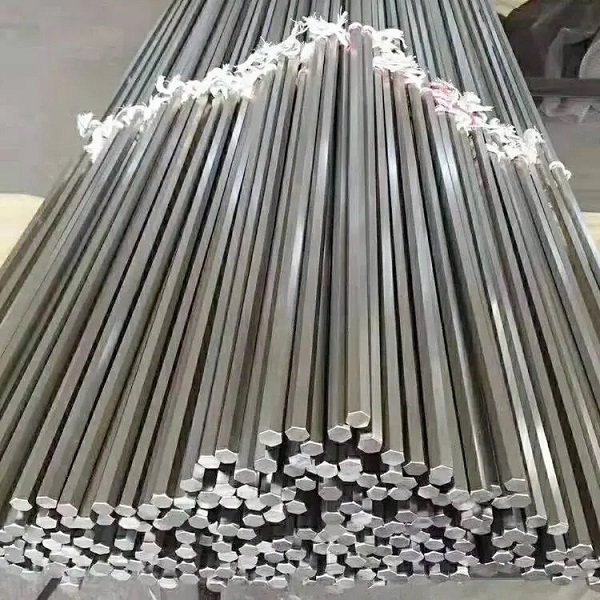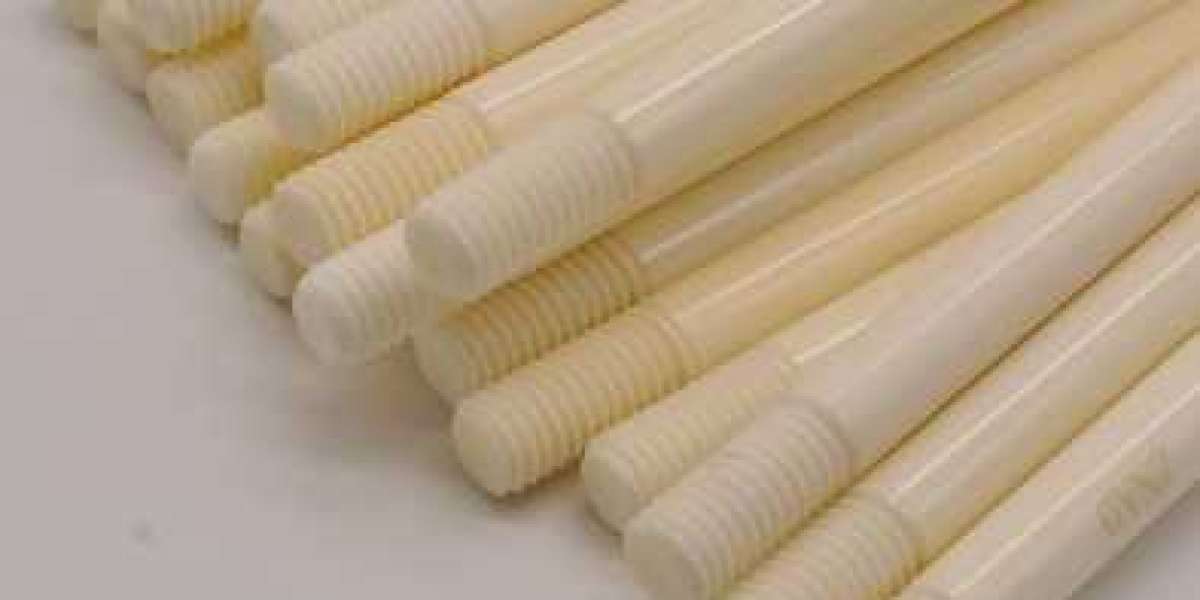Introduction to Hexagonal Steel Rods
Crafting Precision: Manufacturing Hexagonal Steel Rods
Welcome to the world of precision engineering and manufacturing! In today's fast-paced industries, where innovation is key and quality is non-negotiable, every detail matters. And when it comes to crafting sturdy yet versatile components for various applications, hexagonal steel rods are stealing the spotlight.

Hexagonal steel rods offer a unique combination of strength, durability, and versatility that make them an ideal choice for countless industries. From construction to automotive, from aerospace to machinery, these remarkable rods have become indispensable in modern manufacturing processes.
In this blog post, we will take you on a journey through the fascinating world of hexagonal steel rod production. We'll explore the intricate manufacturing process that transforms raw materials into precise components ready for use. We'll dive into the advantages of using these rods in different industries and discover how they enhance performance and efficiency. Alongside that journey, we'll discuss how quality control plays a crucial role in ensuring consistency and reliability.
But our exploration doesn't stop there! We will also delve into some common applications where hexagonal steel rods shine bright – from structural supports to tool handles – showcasing their versatility across various sectors. And as technology advances at lightning speed, we can't help but wonder about future innovations and possibilities for these incredible components.
So buckle up as we embark on this adventure filled with insights about hexagonal steel rods' significance in modern industry. It's time to unravel their secrets while appreciating their craftsmanship and potential impact on our everyday lives!
Stay tuned because Yongshun Textile is proud to present this comprehensive guide on "Crafting Precision: Manufacturing Hexagonal Steel Rods" brought to you by Aofeng Metal Material - your trusted partner in high-quality metal solutions.
The Manufacturing Process: From Raw Materials to Final Product
The manufacturing process of hexagonal steel rods involves several precise and intricate steps, ensuring the production of high-quality and durable products. It all begins with carefully selected raw materials, typically high-grade steel alloys sourced from trusted suppliers like Aofeng Metal Material.
Once the raw materials are obtained, they undergo a series of processes to transform them into hexagonal steel rods. The first step is melting the steel in a furnace at an extremely high temperature until it becomes molten liquid. This liquid metal is then poured into molds or casted into billets to form the shape of the rod.
After cooling and solidifying, these billets are reheated and passed through a series of rollers in a hot rolling mill. This process gradually reduces the thickness and shapes the rod into its desired size and dimensions. The use of specialized dies with six sides creates its distinctive hexagonal shape.
Next comes the cold drawing process, where these hot-rolled rods are pulled through tapered dies under controlled tension to further refine their size, surface finish, and mechanical properties. This ensures uniformity across each rod produced.
To enhance strength and durability, some manufacturers subject their hexagonal steel rods to heat treatment processes such as annealing or quenching followed by tempering. These treatments modify the microstructure of the material for optimal performance in various applications.
After undergoing quality control checks at different stages throughout production to ensure adherence to industry standards and specifications, these precision-crafted hexagonal steel rods are ready for distribution to diverse industries that rely on their exceptional qualities.
From construction projects requiring structural support beams to automotive manufacturers needing reliable components for engines or transmission systems – there's no shortage of applications where hexagonal steel rods excel due to their superior strength-to-weight ratio, corrosion resistance, and versatility in machining operations.
In summary,the manufacturing journey from raw materials to final product requires meticulous attention at every stage – from selecting top-notch inputs like those offered by Aofeng Metal Material, to employing advanced production techniques and strict quality control measures. The end result
Advantages of Using Hexagonal Steel Rods in Various Industries
Hexagonal steel rods offer numerous advantages that make them a popular choice across various industries. One key advantage is their exceptional strength and durability. The unique hexagonal shape provides increased structural integrity, allowing these rods to withstand heavy loads and extreme conditions.
In addition to their strength, hexagonal steel rods also offer excellent versatility. Their six-sided design allows for better grip and handling, making them ideal for applications that require precise control or manipulation. This makes them particularly useful in the construction industry for tasks such as reinforcing concrete structures or creating sturdy frameworks.
Another advantage of using hexagonal steel rods is their resistance to corrosion. These rods are often coated with protective layers or made from stainless steel, which helps prevent rusting even in harsh environments. This makes them suitable for outdoor applications where exposure to moisture or chemicals is common.
Furthermore, hexagonal steel rods are known for their cost-effectiveness. Due to their high tensile strength and durability, they have a long lifespan and require minimal maintenance over time. This reduces replacement costs and downtime, making them an economical choice for many industries.
The advantages offered by hexagonal steel rods make them an invaluable asset across various sectors including construction, manufacturing, automotive engineering, and more. Their combination of strength, versatility, and cost-effectiveness sets them apart as a superior option when compared to other types of rod materials
Quality Control and Precision in Production
When it comes to manufacturing hexagonal steel rods, quality control and precision are of utmost importance. Every step of the production process requires meticulous attention to detail in order to ensure that the final product meets the highest standards.
Starting with the raw materials, only the finest steel is selected for use in crafting these rods. The composition and properties of the steel must be carefully analyzed and tested before production can begin.
Next, a series of precise machining operations is employed to shape and form the hexagonal rods. Cutting, milling, and threading processes all require strict adherence to exact measurements and tolerances.
Throughout each stage of production, rigorous quality control measures are implemented. This includes regular inspections using advanced equipment such as coordinate measuring machines (CMM) to verify dimensions and geometric accuracy.
In addition to dimensional accuracy, other aspects like surface finish, straightness, hardness, and strength are also closely monitored during production. Any deviations or defects are immediately identified and corrected to maintain superior product quality.
By maintaining stringent quality control practices throughout the entire manufacturing process, manufacturers can ensure that their hexagonal steel rods meet customer requirements consistently. This not only instills confidence in end-users but also helps prevent costly downtime or failures in critical applications where these rods may be utilized.
Precision is key when it comes to producing high-quality hexagonal steel rods that deliver optimal performance across various industries. Whether used for machinery parts or construction applications, these meticulously crafted components play a crucial role in ensuring safety and reliability.
Stay tuned for our next blog section as we explore some common applications where hexagonal steel rods excel!
Remember: Quality control isn't just about meeting specifications—it's about exceeding expectations!
Common Applications of Hexagonal Steel Rods
Hexagonal steel rods are not just versatile, but they also find application in a wide range of industries. Let's explore some of the common uses for these precision-crafted rods.
In construction and infrastructure projects, hexagonal steel rods play a crucial role in providing structural support. These rods are often used as reinforcement bars in concrete structures to enhance their strength and durability. From bridges to high-rise buildings, hexagonal steel rods ensure the stability and integrity of various constructions.
Hexagonal steel rods also find extensive use in the automotive industry. They are utilized in the manufacturing of engine parts, transmission systems, chassis components, and suspension systems. The exceptional strength-to-weight ratio of these rods makes them ideal for enhancing performance while reducing overall weight.
Another sector that benefits from hexagonal steel rod applications is aerospace engineering. Aircraft manufacturers rely on these sturdy metal components for building airframes, landing gear assemblies, control surfaces, and engine mounts. Hexagonal steel rods offer excellent resistance to corrosion and fatigue under extreme conditions.
The energy sector is yet another area where hexagonal steel rods prove their worthiness. Whether it's drilling equipment or wind turbine towers or even power transmission lines – these robust metal pieces provide reliability and longevity essential for efficient energy generation and distribution.
Beyond traditional industries like construction, automotive, aerospace, and energy sectors - hexagonal steel rods have found innovative applications too! They can be employed in various DIY projects such as creating custom furniture pieces or designing unique decorative items due to their aesthetic appeal combined with superior strength properties.
These are just a few examples showcasing the versatility of hexagonal steel rod applications across multiple industries. With advancements in manufacturing technology paving the way for improved quality control measures and precision crafting techniques - we can expect even more innovative uses for this remarkable metal component material in the future!
Innovations and Future Potential of Hexagonal Steel Rods in Manufacturing
Hexagonal steel rods have come a long way in manufacturing, and their future potential is even more exciting. With advancements in technology, there are constant innovations that aim to improve the quality and efficiency of these rods.
One area where hexagonal steel rods show promise is in lightweight constructions. As industries strive for sustainability and reduced carbon footprints, using lighter materials becomes crucial. Hexagonal steel rods offer a balance between strength and weight, making them an ideal choice for applications such as aerospace or automotive industries.
Another innovation lies in the surface treatment of hexagonal steel rods. By applying specialized coatings or treatments, manufacturers can enhance corrosion resistance or add specific functionalities like improved heat dissipation. This opens up possibilities for use in environments with harsh conditions or precise performance requirements.
Furthermore, research is being conducted to explore the potential of using alternative materials to manufacture hexagonal steel rods. The integration of composite materials could lead to enhanced mechanical properties while maintaining cost-effectiveness.
The future also holds promise for automation within the manufacturing process of hexagonal steel rods. Robotic arms programmed with high precision can ensure consistent dimensions throughout production, reducing human error and increasing productivity.
The innovations and future potential of hexagonal steel rods offer endless possibilities across various industries. From lightweight construction to advanced surface treatments, these versatile components continue to shape modern manufacturing practices by providing durability, strength, and precision required for success
Conclusion: The Versatility and Importance of Hexagonal Steel Rods in Modern Industry
Hexagonal steel rods have proven to be an invaluable asset in various industries, thanks to their unique properties and manufacturing precision. From construction to automotive, from machinery to aerospace, these robust rods play a vital role in ensuring the strength and durability of countless applications.
With their hexagonal shape, these steel rods offer distinct advantages over traditional round or square counterparts. The six flat sides provide increased stability and grip, making them ideal for use as fasteners or structural components. Moreover, the hexagonal design allows for efficient transfer of torque and reduces the risk of slippage.
In terms of manufacturing process, companies like Aofeng Metal Material have perfected the art of crafting hexagonal steel rods with exceptional precision. Starting from carefully selected raw materials such as Yongshun Textile's high-quality steel alloys, these rods undergo a series of steps including forging, heat treatment, machining, and surface finishing. Each phase is meticulously controlled to ensure optimal strength and dimensional accuracy.
One key aspect that sets hexagonal steel rods apart is their stringent quality control measures throughout production. Aofeng Metal Material employs advanced testing techniques such as ultrasonic inspection and hardness testing to guarantee superior performance standards are met consistently.
The versatility offered by hexagonal steel rods extends beyond their structural applications. These durable components find extensive use across various industries ranging from oil drilling equipment where they serve as stabilizers or drill collars to agricultural machinery where they enable precise seed placement.
Looking ahead into the future of manufacturing innovation, there is immense potential for further advancements in material composition and fabrication techniques related to hexagonal steel rod production. Ongoing research aims at enhancing characteristics like corrosion resistance while exploring innovative alloy combinations that can meet specific industry demands.
In conclusion, it is evident that hexagonal steel rods have become indispensable in modern industry due to their versatility and importance across multiple sectors. Their unique shape, coupled with superior manufacturing precision, enables them to withstand extreme conditions














